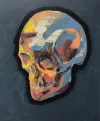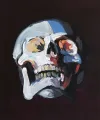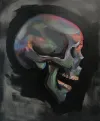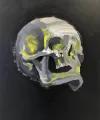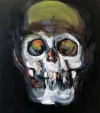GERRY PARKE
Cut From The Cloth
26 January – 14 February
Preview: Sunday 26 January, 2 – 4PM
“The need to dominate, to impress, so central to masculinity, will find a way of expressing itself.”[1]
This series is part of a continued investigation into how masculine identity is formed, developed and expressed in the world. But also how others perceive, react and respond to this ‘Masculine Performance’.
Hegemonically masculine behaviours and attitudes (e.g., violence, aggressiveness, terseness, group cohesion and physicality) are not biologically determined, they are learned behaviours that are produced in social institution and reinforced through human interactions”[2]
Ambivalence towards the other is derived from the continued strength of male culture; being “one of the boys”. Yet many men are forced to form a behaviour they may not actually enjoy.[3] “Men are all sold the narrative of male domination, but the reality is many lead lives of frustration and servitude.”[4]
“Boys seek other ways to gain self-esteem: they form hierarchies. This linking of self-worth to status has pervaded the whole business of being a man. To feel better about themselves, boys have to feel better than others.”[5]
The jostling of original figures, as captured through photography, is echoed in a new form of jostling in painterly space across painting styles. Embracing paint as a language and a substance is a means of addressing painting’s potential. Given that the practice addresses ideas of masculine performance, male identity, group cohesion and masculine “baggage”, it is important to look at what paint contributes to the content of the work and, more specifically, how paint can represent and embody those notions, rather than merely re-presenting observed action via a photo referent.
The performance of the painter becomes critical but how can this performance be calibrated to celebrate the potential of the medium while avoiding it being a simplistic celebration of all things male? Is this just another man making art about men? Is it only adding to the noise, and perpetuating the hegemonic masculine structure? Or can male behaviours be highlighted, even exaggerated in order to be offered as and for critique?
The skulls operate on this knife-edge; on the one hand an overused pop-cultural cliché while on the other a connection to centuries of art makers who have contemplated mortality while facing the challenges of what it is like to live. They are a means of addressing the burden of masculinity, the burden bound up in the collective practice of performing masculinity: violence; conspicuous over-consumption, the propensity for risk-taking; loneliness, depression.
Pankaj Mishra sums up the situation in concluding his article The Crisis of Modern Masculinity for The Guardian;
“As a straitjacket of onerous roles and impossible expectations, masculinity has become a source of great suffering – for men as much as women. To understand this is not only to grasp its global crisis today. It is also to sight one possibility of resolving the crisis: a release from the absurd but crippling fear that one has not been man enough”.[6]
[1] Grayson Perry, The Descent Of Man, n.d.
[2] Martin, Brandon E., and Frank Harris III. “Journal of Men’s Studies.” Journal of Men’s Studies. 14.3 (2006): 359-378. Print.
[3] Jock Philips, A Man's Country? The Image Of The Pakeha Male: A History Revised Edition (repr., Penguin, 1996).
[4] Perry, n.d
[5] Perry, n.d
[6] Pankaj Mishra, "The Crisis In Modern Masculinity", The Guardian, 2018, https://www.theguardian.com/books/2018/mar/17/the-crisis-in-modern-masculinity.



